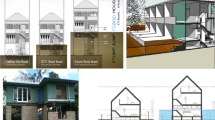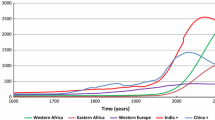Abstract
Australia has developed extensive policies and guidelines for the management of its water. The City of Salisbury, located within metropolitan Adelaide, South Australia, developed rapidly through urbanisation from the 1970s. Water sensitive urban design principles were adopted to maximise the use of the increased run-off generated by urbanisation and ameliorate flood risk. Managed aquifer recharge was introduced for storing remediated low-salinity stormwater by aquifer storage and recovery (ASR) in a brackish aquifer for subsequent irrigation. This paper outlines how a municipal government has progressively adopted principles of Water Sensitive Urban Design during its development within a framework of evolving national water policies. Salisbury’s success with stormwater harvesting led to the formation of a pioneering water business that includes linking projects from nine sites to provide a non-potable supply of 5 × 106 m3∙year–1. These installations hosted a number of applied research projects addressing well configuration, water quality, reliability and economics and facilitated the evaluation of its system as a potential potable water source. The evaluation showed that while untreated stormwater contained contaminants, subsurface storage and end-use controls were sufficient to make recovered water safe for public open space irrigation, and with chlorination, acceptable for third pipe supplies. Drinking water quality could be achieved by adding microfiltration, disinfection with UV and chlorination. The costs that would need to be expended to achieve drinking water safety standards were found to be considerably less than the cost of establishing dual pipe distribution systems. The full cost of supply was determined to be AUD$1.57 m–3 for non-potable water for public open space irrigation, much cheaper than mains water, AUD $3.45 m–3at that time. Producing and storing potable water was found to cost AUD$1.96 to $2.24 m–3.

Similar content being viewed by others
References
Commonwealth of Australia Constitution Act 1900(Imp) constituting the Commonwealth of Australia. http://www.austlii.edu.au/au/ legis/cth/consol_act/coaca430/ (accessed January 13 2017)
NWQMS National Water Quality Management Strategy. 2015, https://www.environment.gov.au/water/quality/national-water-quality-management-strategy (accessed 10 February 2016)
NRMMC. EPHC and NHMRC. Australian Guidelines for Water Recycling, Managing Health and Environmental Risks, Volume 2CManaged Aquifer Recharge. Natural Resource Management Ministerial Council, Environment Protection and Heritage Council National Health and Medical Research Council, 2009, 237pp. http://www.environment.gov.au/water/quality/publications/nwqms-australian-guidelines-water-recycling-managing-health-phase2-aquifer-recharge (accessed 24 February 2016)
Clar M. State of the LID/GSI Practice: Perspectives from the ASCEEWRI-LID/GSI National Committee, LID 2016 Conference, Beijing, Paper 336
CoAG. Intergovernmental Agreement on the National Water Initiative, 2004. http://nwc.gov.au/__data/assets/pdf_file/0008/24749/Intergovernmental-Agreement-on-a-national-water-initiative. pdf (accessed 10 February 2016)
JSCWSC. Evaluating options for Water Sensitive Urban Design–a National Guide, Joint Steering Committee for Water Sensitive Cities, 2009, Department of Environment, Water, Heritage and the Arts, Canberra, Australia. https://www.environment.gov.au/ resource/evaluating-options-water-sensitive-urban-design-%E2% 80%93-national-guide (accessed 10 February 2016)
City of Salisbury. Our History, 2016. http://www.salisbury.sa.gov.au/Council/About_our_City_of_Salisbury/Our_History (accessed 10 February 2016)
Hains S. Stormwater: Towards Water Sensitive Cities, Local Government Managers Association Congress, 2009, Darwin, Australia. www.salisbury.sa.gov.au/.../watersensitivecities-paper. pdf (accessed 10 February 2016)
Hutchings A, Garnaut C. The Private Development Company and the Building of Planned Communities in Post-war South Australia: Reid Murray Developments, Reality Development Corporation and their successors. Journal of the Historical Society of South Australia, 2012, 40: 96–116
City of Salisbury. Wetlands locations. 2015. http://www.salisbury. sa.gov.au/Live/Environment_and_Sustainability/Wetlands_and_-Water/Wetlands/Wetlands_Locations (accessed 10 February 2016)
Radcliffe J C. Water Recycling in Australia 2004, Australian Academy of Technological Sciences and Engineering, Melbourne
Dandy G, Ganji A, Kandulu J, Hatton Mac Donald D, Marchi A, Maier H, Mankad A, Schmidt C E. (2014). Goyder Institute for Water Research Technical Report Series No. 14/1, Adelaide, South Australia. ISSN: 1839–2725. http://goyderinstitute.org/index.php? id = 20 (accessed 18 Jan 2017)
Page D, Barry K, Pavelic P, Dillon P, Chassagne C. Preliminary quantitative risk assessment for the Salisbury stormwater ASTR project, 2008, Water for a Healthy Country National Research Flagship Report. http://www.clw.csiro.au/publications/waterforahealthycountry/ 2008/wfhc-Salisbury-ASTR-HACCP.pdf (accessed 17 January 2017).
Page D, Miotlinski K, Gonzalez D, Barry K, Dillon P, Gallen C. Environmental monitoring of selected pesticides and organic chemicals in urban stormwater recycling systems using passive sampling techniques. Journal of Contaminant Hydrology, 2014, 158: 65–77
Page D, Gonzalez D, Naumann B, Dillon P, Vanderzalm J, Barry K. Stormwater Managed Aquifer Recharge Risk-Based Management Plan, Parafield Stormwater Harvesting System, Stormwater supply to the Mawson Lakes Recycled Water Scheme, Industrial Uses and Public Open Space Irrigation, 2013, Goyder Institute for Water Research Technical Report 13/18, Adelaide, South Australia
Page D W, Vanderzalm J L, Barry K E, Torkzaban S, Gonzalez D, Dillon P J. Dillon, P J. E. coli and turbidity attenuation during urban stormwater recycling via Aquifer Storage and Recovery in a brackish limestone aquifer. Ecological Engineering, 2015, 84: 427–434
Page D, Gonzalez D, Dillon P, Vanderzalm J, Vadakattu G, Toze S, Sidhu J, Miotlinski K, Torkzaban S, Barry K. Managed Aquifer Recharge Stormwater Use Options: Public Health and Environmental Risk Assessment Final Report, Goyder Institute for Water Research 2013, Technical Report 13/17, Adelaide, South Australia
DPLG. 2011, Spatial Data Download. http://www.planning.sa.gov. au/ Department of Planning and Local Government, Adelaide, South Australia (accessed 4 June 2011)
DPTI. 2016, Development Plan, Salisbury Council, Consolidated to 7 January 2016. Department of Planning Transport and Infrastructure, Adelaide, South Australia, (617pp)
City of Salisbury–Annual Reports. http://www.salisbury.sa.gov.au/ Council/Council_Plans_and_Documents/City_Management_Plans/ Annual_Report (accessed 19 January 2017)
Pitman C. Stormwater harvesting and utilisation. Water Recycling Australia, 2nd National Conference 2003, Brisbane. Australia.
Radcliffe J C. Water recycling in Australia–during and after the drought. Environmental Science Water Research & Technology, 2015, 1(5): 554–562
Page D, Gonzalez D, Sidhu J, Toze S, Torkzaban S, Dillon P. Assessment of treatment options of recycling urban stormwater recycling via aquifers to produce drinking water quality. Urban Water Journal, 2016, 13(6): 657–662
Dillon P. Page D, Dandy G, Leonard R, Tjandraatmadja G, Vanderzalm J, Rouse K, Barry K, Gonzalez D, Myers B. Managed Aquifer Recharge Stormwater Use Options: Summary of Research Findings, Goyder Institute for Water Research, 2014, Technical Report 14/13. http://goyderinstitute.org/index.php?id = 20 (accessed 24 February 2016)
Page D W, Barry K, Gonzalez D, Keegan A, Dillon P. Reference pathogen numbers in urban stormwater for drinking water risk assessment. Journal of Water and Health, 2016, 16(1): 30–39
Page D, Vanderzalm J, Dillon P, Gonzalez D, Barry K. Stormwater quality review to evaluate treatment for drinking water supply via managed aquifer recharge. Water, Air, and Soil Pollution, 2016, 227(9): 1–16
Page D, Gonzalez D, Torkzaban S, Toze S, Sidhu J, Miotlinski K, Barry K, Dillon P. Microbiological risks of recycling urban stormwater via aquifers for various uses in Adelaide, Australia. Environmental Earth Sciences, 2015, 73(12): 7733–7737
WHO Guidelines for Drinking-Water Quality. 4th Edn. 2011,World Health Organisation, Geneva, Switzerland. http://whqlibdoc.who. int/publications/2011/9789241548151_eng.pdf?ua = 1 (accessed 1 November 2016)
Clark R, Gonzalez D, Dillon P, Charles S, Cresswell D, Naumann B. Reliability of water supply from stormwater harvesting and managed aquifer recharge with a brackish aquifer in an urbanising catchment and changing climate. Environmental Modelling & Software, 2015, 72: 117–125
Sidhu J P S, Toze S, Hodgers L, Shackelton M, Barry K, Page D, Dillon P. Pathogen inactivation during passage of stormwater through a constructed reedbed and aquifer transfer, storage and recovery. Water Science and Technology, 2010, 62(5): 1190–1197
Sidhu J P, Toze S, Hodgers L, Barry K, Page D, Li Y, Dillon P. Pathogen decay during Managed Aquifer Recharge at four different sites with different geochemical characteristics and recharge water sources. Journal of Environmental Quality, 2015, 44(5): 1402–1412
Stevens D. Audit of the Parafield Stormwater Harvesting and Managed Aquifer Recharge System for Non-Potable Use against the Stormwater Risk-Based Management Plan. Goyder Institute for Water Research 2014, Occasional Paper Series No. 14/1. http:// www.goyderinstitute.org/uploads/Goyder-RBMP%20Audit_Final. pdf (accessed 24 February 2016)
Water Sensitive S A. http://www.watersensitivesa.com/ (accessed 18 Jan 2017)
Acknowledgments
The authors are grateful to City of Salisbury for sharing information on their water systems. We wish to thank the following partners to two major research projects; Aquifer Storage Transfer and Recovery (ASTR) and Managed Aquifer Recharge and Stormwater Use Options (MARSUO) that supported much of the data and analysis synthesized in this paper. These include the Commonwealth Government of Australia for its support through the Australia-Europe Research Collaboration Fund and the National Water Commission, the State Government of SA through the Premiers Science and Research Fund and the Goyder Institute forWater Research, and other partners; CSIRO Land and Water, City of Salisbury, the Adelaide and Mount Lofty Natural Resources Management Board, the former United Water International, SA Water Corporation, University of South Australia and University of Adelaide. The lead author also acknowledges an invitation from Professor Haifeng Jia to enable a keynote talk at the Low Impact Development 2016 Conference in Beijing, and which became the motivation for this journal paper. The authors are indebted to three anonymous reviewers of the journal for helpful comments that improved the paper.
Author information
Authors and Affiliations
Corresponding author
Rights and permissions
About this article
Cite this article
Radcliffe, J.C., Page, D., Naumann, B. et al. Fifty years of water sensitive urban design, Salisbury, South Australia. Front. Environ. Sci. Eng. 11, 7 (2017). https://doi.org/10.1007/s11783-017-0937-3
Received:
Revised:
Accepted:
Published:
DOI: https://doi.org/10.1007/s11783-017-0937-3




